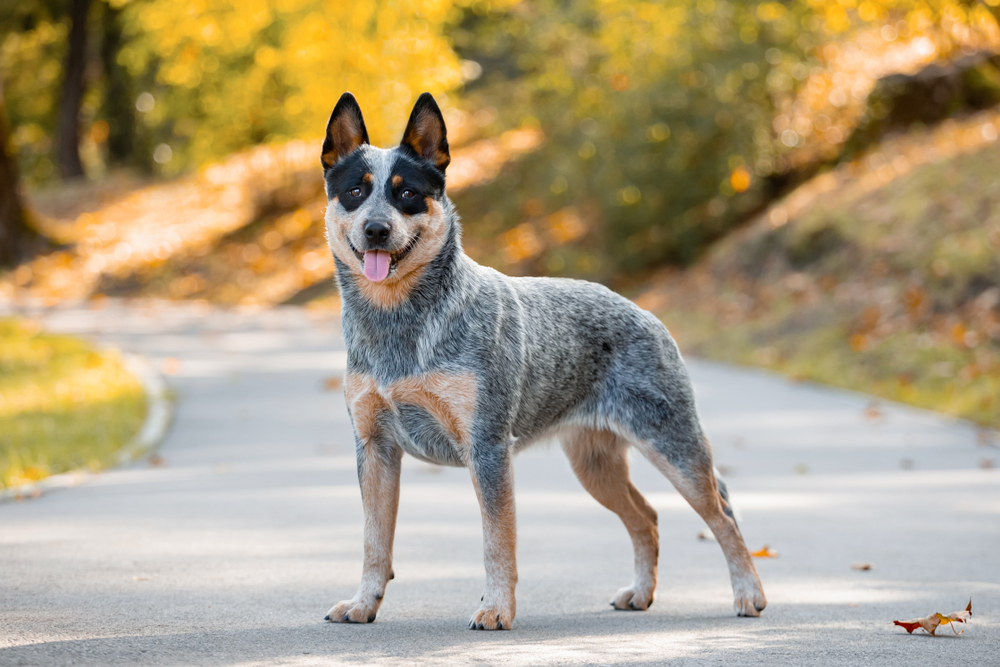
If you’re a dog parent, chances are, at some point, you’ve pondered what age your dog is in human years. When determining your pup’s age in human years, you probably went by the “seven years of a human’s life is equivalent to one year of a dog’s life” formula. However, if you tried to figure out your pet’s age this way, you probably came up with the wrong number, as this formula is more of an urban myth than an accurate way to figure out a dog’s age in human years.
How did this urban myth come about? Back in the day, the average lifespan of humans was around 70 years, while most canines lived about 10 years. As such, someone somewhere decided that 10 in dog years equals 70 in human years, and this formula was born.
Why isn’t this formula accurate? We know far more about aging in dogs nowadays, which means we now know that many factors go into the equation. What factors? A dog’s size, genetics, breed, and more all factor in. For example, large and giant breeds age more quickly than small breeds.
So, how can you roughly determine your dog’s age in human years? Let’s take a 15-year-old dog; they would be between 76 and 114 in human years (which is quite the range!).
| Size: | Age in Human Years: |
| Small Breed (20 lbs or less): | 76 years |
| Medium Breed (21 to 50 lbs): | 83 years |
| Large Breed (51 to 100 lbs): | 93 years |
| Giant Breed (100+ lbs): | 114 years |
Source: AKC


How to Calculate Dog Years to Human Years
As mentioned above, calculating a dog’s age to a human’s requires a bit more than just utilizing the old 7:1 ratio. According to the American Veterinary Medical Association, a canine’s first year of life equals anywhere between 12 and 15 human years. Meanwhile, the second year of life is equivalent to around 9 to 10 human years, and from the third year of life on, a year equals about 4 to 5 years. Why are there no set numbers across the board? Because how many human years a single dog year equals depends on the size of the canine.
Small Breeds


If you’ve ever had small and large breed dogs, you already know that smaller canines live to be older than larger ones. However, the why of this isn’t clear. It may be because larger breeds grow more quickly, which increases their chances of getting health issues, or it may be that selective breeding has increased their risk of getting cancer, leading to earlier deaths. Whatever causes this, it means getting the human age of a small breed dog is different than determining that of a large breed. A small breed dog’s first year of life is equivalent to about 15 human years. When they reach the age of two, they’ll be roughly 24, and by age three, small breeds will be about 28 in human years. So, a 15-year-old small breed pup would be about 76 in human years.
Medium Breeds


While large breed dogs grow much faster than small breeds, medium-sized breeds only grow a bit faster, which makes calculating their age similar. In fact, their first three years of life are also equivalent to 15, 24, and 28 in human years. But by the time a medium-sized pup hits the age of six, they start aging a smidge faster, which is why they are 83 in human years at the age of 15 in dog years.
Large Breeds


Large dogs age more quickly than small and medium-sized breeds once they reach the age of six (though in the first few years of their life, their age in human years will be the same as that of smaller canines). This means if a large breed dog were to reach the age of 15 (which, unfortunately, is rare), they would be about 93 in human years.
Giant Breeds


Giant dogs age the quickest out of all breeds. Interestingly, though, they mature more slowly, as their first year of life is only equal to about 12 human years. The second year of their life puts them at 22 in human years, but by age three, they start aging more quickly. That’s why if a giant breed pup reached 15 in dog years (very rare), they would be 114 in human years!
Because aging differs from dog to dog, it’s still not an exact science. However, the field of canine gerontology is growing, and plenty of researchers are attempting to figure out exactly how dogs age and how their lifespans can be increased.


The Life Stages of a Dog
Canines have three main life stages: puppy, adult, and senior.
Puppy: 0–2 years


The puppy stage can last up to two years, as some breeds mature more slowly than others. This stage is the most vital for dogs as they’re growing to their full size and going through socialization and training.
Adult: 2 years–8 years


When your pup reaches their full height and weight, they’re officially an adult dog! Now is the time to ensure you go to the vet routinely and your dog receives all their vaccinations to ensure longevity.
Senior: 8+ years


Once a dog reaches their senior years, you want to monitor their health closely. In the senior years, dogs are more prone to developing illness and disease.


Life Span by Breed Size
| Size: | Average Life Span: |
| Small Breed (20 lbs or less): | 10 – 15 years |
| Medium Breed (21 to 50 lbs): | 10 – 13 years |
| Large Breed (51 to 100 lbs): | 8 – 12 years |
| Giant Breed (100+ lbs): | 8 – 10 years |
Source: American Kennel Club
Key Factors That Affect the Dog’s Aging Process
While several factors affect how quickly canines age, size and genetics play the most significant roles, as the larger the dog, the faster they age. However, other factors can have an impact on canine aging.
A dog’s diet can impact how fast they age, as a dog eating an unhealthy diet that doesn’t meet their nutritional needs can suffer health conditions down the road. Also, dogs eating more or less than what they require may also create some health problems as a result. These health issues can increase the rate of their aging. This is why giving your dog a high-quality diet and avoiding too many treats and human food is important!
Environmental factors can also play a role, as an unsafe or unhappy home environment can increase the rate of aging.


Conclusion
You might have been calculating your dog’s age into human years wrong this whole time, but now you should have a much better idea of what their real human age is! Dog aging is still quite a mystery to us, but we’re learning more about it all the time, so you can expect the current formula to be tweaked in the future. As far as 15-year-old dogs go, though, a small breed pup will be around 76 in human years, while a medium-sized dog will be 83, a large breed will be 93, and a giant breed will be 114 human years old.
Featured Image Credit: Danielle W Press, Shutterstock



